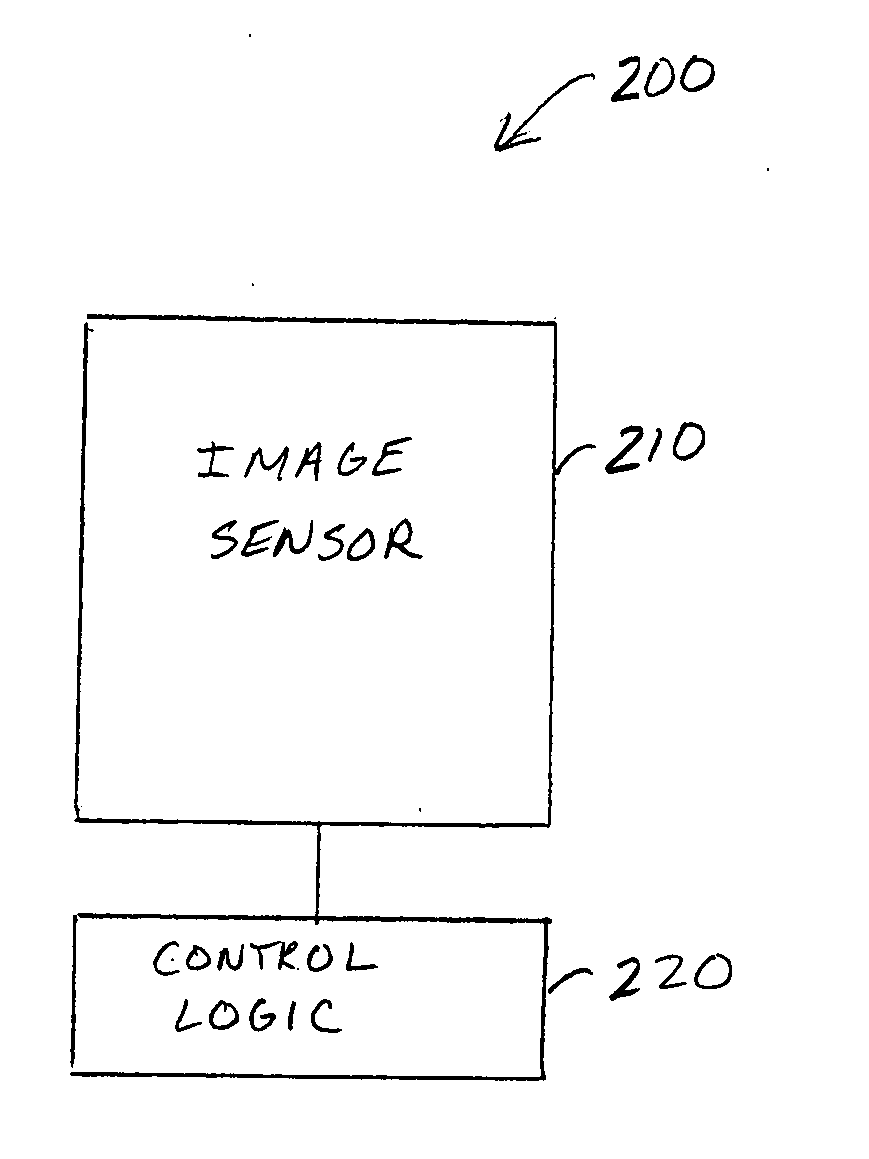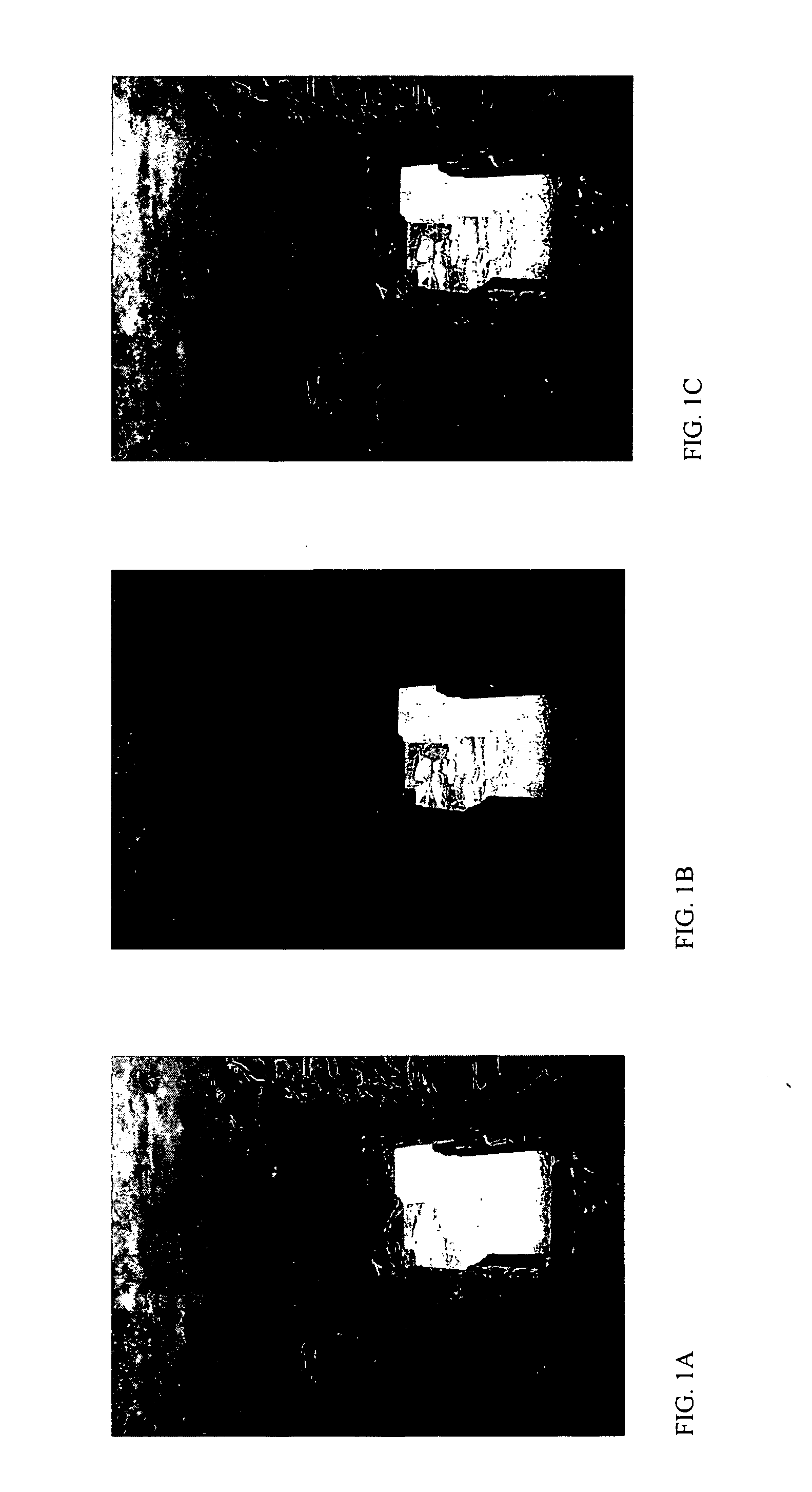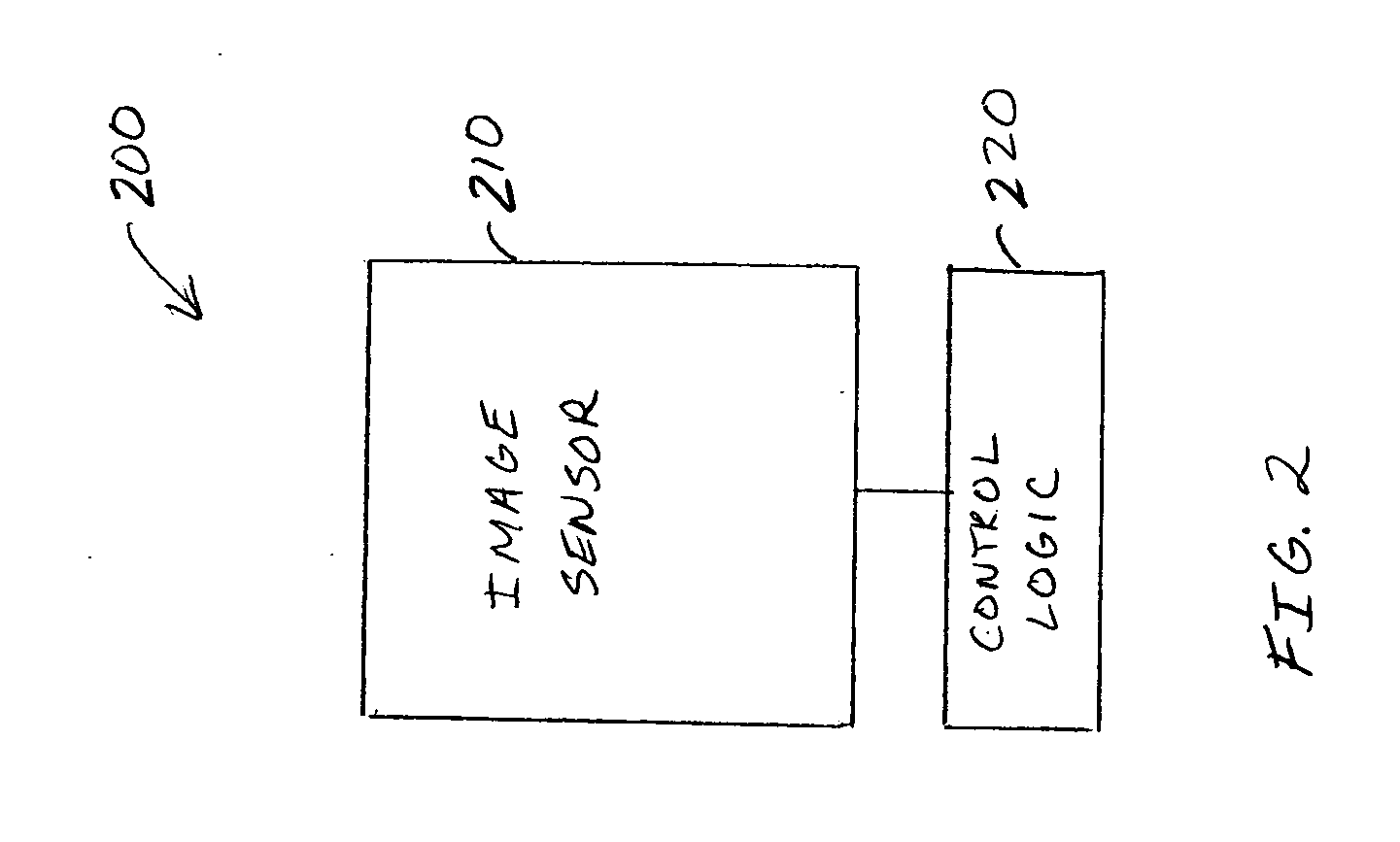Technique for increased exposure range in image sensors
a technology of image sensor and exposure range, which is applied in the direction of exposure control, color signal processing circuit, instruments, etc., can solve the problems of inability to capture multiple images that are identical, limited dynamic range of digital image sensor, and high probability of multiple images being captured by the same photographer
- Summary
- Abstract
- Description
- Claims
- Application Information
AI Technical Summary
Problems solved by technology
Method used
Image
Examples
Embodiment Construction
[0010] In the following detailed description, reference is made to the accompanying drawings which form a part hereof, and in which is shown by way of illustration specific embodiments in which the invention may be practiced. It is to be understood that other embodiments may be used and structural and logical changes may be made without departing from the scope of the present invention.
[0011] This document describes systems and methods to improve the range of exposure for image sensors. As discussed previously for high contrast scenes, the dynamic range of a standard image sensor forces a camera user to choose to capture either the detail in dark areas or to choose to capture the detail in the light areas of the scene. A common technique in film photography is to improve the range of exposure of an image by “bracketing” an image. Bracketing an image involves taking multiple exposures of the image. Usually three exposures are taken in quick succession. One picture is exposed with th...
PUM
 Login to View More
Login to View More Abstract
Description
Claims
Application Information
 Login to View More
Login to View More - R&D
- Intellectual Property
- Life Sciences
- Materials
- Tech Scout
- Unparalleled Data Quality
- Higher Quality Content
- 60% Fewer Hallucinations
Browse by: Latest US Patents, China's latest patents, Technical Efficacy Thesaurus, Application Domain, Technology Topic, Popular Technical Reports.
© 2025 PatSnap. All rights reserved.Legal|Privacy policy|Modern Slavery Act Transparency Statement|Sitemap|About US| Contact US: help@patsnap.com



